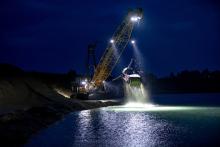Cement ex-works prices rose in selected markets in 1Q2017, according to 2Q2017 Global Cement Trade Price Report (GCTPR ) from CW Research.
FOB (free on board) prices for grey cement increased in March 2017 and are expected to continue improving broadly in the upcoming quarter, whereas those of white cement, clinker and slag will show mixed trends.
According to Tea Vukicevic, associate analyst with %$Linker:
“The Russian recovery from the crisis has started to reflect on cement prices, which have been steadily growing. China, on the other hand, has been benefitting from a strong construction environment, which has allowed cement manufacturers to raise prices all across the country.”
Regionally, average selling prices (ASP) for cement showed an increase in Asia-Pacific and some markets in the Americas in 1Q2017. In the US, average cement prices advanced quarter-on-quarter (QoQ) on an ex-works basis, reaching US$106.7/ton.
Manufacturers have attributed this boost to a better momentum in the construction sector. Mexican factory prices in local currency also rose, which led to the strongest retail-level price increase in the region.
In Asia-Pacific, Chinese ex-works prices improved 13.1% QoQ and 20.8 year-on-year (YoY) in the first quarter of the year, driven by a growing demand for cement.
In the same period, Indian average selling prices for cement reached $61.4/ton, a YoY increase of 2.9%.
Looking forward, Indian cement manufacturers expect volatility in ex-works cement prices.
According to Filipe Gouveia, analyst with CW Research: “Looking onwards, future ex-works rates in the US are expected to trend upwards, buoyed by consumer spending and growing demand, while in Eastern Europe manufacturers are announcing price increases. These market dynamics are expected to support higher trade prices in the upcoming months.”
In March 2017, CW Research’s proprietary global average grey cement FOB price increased by 2.8% to US$55.1/ton when compared to December 2016.
Nonetheless, Turkish producers saw prices decrease 3.9% QoQ and 10.8% YoY.
However, Turkey-based cement makers increased their export volumes by 43.1% on a quarterly basis. In the upcoming quarter, most regions are expected to record an improvement in FOB prices for grey cement. Middle East, North America and the Caribbean are projected to register the largest increases.
White cement FOB prices show mixed trends across different regions. In addition to playing a key role in grey cement trade, the Turkish market was also the worldwide leader of white cement exports in Q1, 2017, accounting for 24.1% of the total trade. Looking forward, the Middle East is forecast to register the largest increase in export prices, reaching about $113/ton by September 2017.
In the first-quarter, clinker trade volumes in the Asia-Pacific-Japan region accounted for almost 60% of the total clinker exports in our set of tracked countries.
Average FOB prices in the Mediterranean Basin are forecast to decrease at the end of the next quarter, while average export prices in Asia-Pacific-Japan are projected to experience a moderate expansion in September 2017.
The outlook for slag remains volatile, notwithstanding seasonal peaks projected across different regions.
In Q1, 2017, total trade volumes for our set of tracked markets decreased 26.9% on a quarterly basis. In this period, the Japanese market led slag exports, accounting for 60% of the total. Japanese FOB prices for slag rose 2.5% on a quarterly basis.
More information about the report can be found %$Linker:






